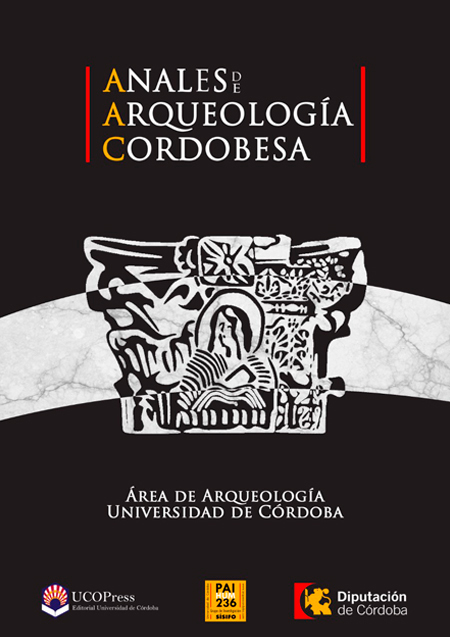Faragola and the legacy of Roman villae in Southern Italy between Late Antiquity and Early Middle Ages
DOI:
https://doi.org/10.21071/aac.v0i27.6291Keywords:
End of the villas, spoliation, crafting activities, re-use, trained labor force, sponsorship.Abstract
The archaeological researches carried out in Southern Italy enabled to gather a great and remarkable amount of data over the ‘end of villas’ and the features of the rural settlement during the early middle age. Often, the abandonment of rural dwellings caused the spoliation of spaces through systematic and organized operations of stripping and re-use of flooring, walls’ coverings, ceilings, furniture and pipes. Ceramic kilns, sedimentation basins for clay, blast furnaces for metals and limestone were installed These operations had been traditionally interpreted as connected to marginal forms of re-occupation. In many cases, these forms of settlement grew in the same areas, yet developed a good level of material culture and crafting activities, beside agriculture and farming. Representatives of the new religious and laic élites and public authorities were recognized, as the sponsors of these activities.Downloads
Download data is not yet available.
Downloads
Published
2016-12-01
How to Cite
TURCHIANO, M., & VOLPE, G. (2016). Faragola and the legacy of Roman villae in Southern Italy between Late Antiquity and Early Middle Ages. Anales De Arquelogía Cordobesa, (27), 97–124. https://doi.org/10.21071/aac.v0i27.6291
Issue
Section
ARTICLES
License
Aquellos autores/as que tengan publicaciones con esta revista, aceptan los términos siguientes:- Los autores/as conservarán sus derechos de autor y garantizarán a la revista el derecho de primera publicación de su obra, el cuál estará simultáneamente sujeto a la Licencia de reconocimiento de Creative Commons que permite a terceros compartir la obra siempre que se indique su autor y su primera publicación esta revista.
- Los autores/as podrán adoptar otros acuerdos de licencia no exclusiva de distribución de la versión de la obra publicada (p. ej.: depositarla en un archivo telemático institucional o publicarla en un volumen monográfico) siempre que se indique la publicación inicial en esta revista.
- Se permite y recomienda a los autores/as difundir su obra a través de Internet (p. ej.: en archivos telemáticos institucionales o en su página web) antes y durante el proceso de envío, lo cual puede producir intercambios interesantes y aumentar las citas de la obra publicada. (Véase El efecto del acceso abierto).


